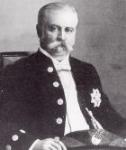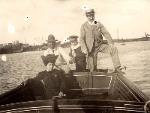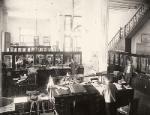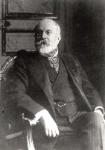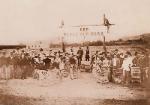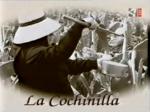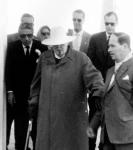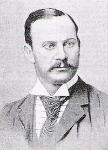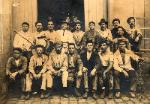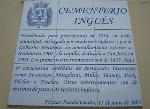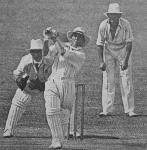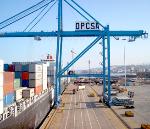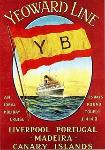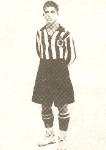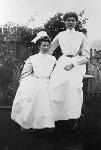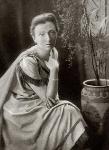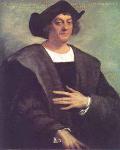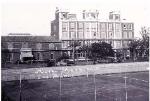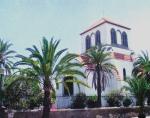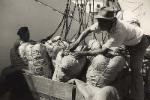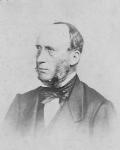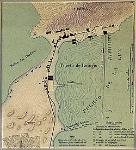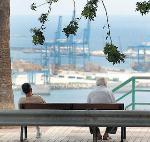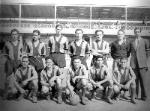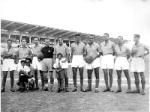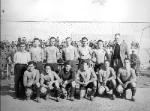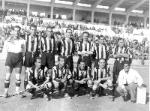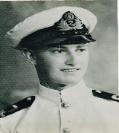| LA LUZ PORT HISTORY PUERTO DE LA LUZ Gran Canaria 1883-2021 |

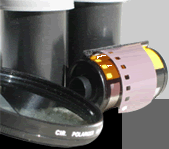
| Sealine with stopover in La Luz Port back in 1929 |
| OPCSA Container Terminal |
| Fernando de León y Castillo |
| Works for the construction of La Luz Port were inaugurated in February 1883 (God Bless Our work) |
| Two major coaling companies operating in La Luz Port in the XIX century |
| La Luz Port Workers |
| Passengers Line (Yeoward Brothers') |
| Some of the sealines with stopover in La Luz Port (1929) |
| Thomas Miller Swanston (1805-1885) Founder of Miller & Co. |
| Women collecting the cochineal in Gran Canaria |
| Sir Alfred Jones |
| Christopher Columbus |
| Launch boat |
| Olivia Stone, author of Tenerife and its Seven Satellites |
| British Cemetery at Las Palmas |
| British Church in Las Palmas |
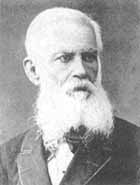
| Mr. Domingo J. Navarro, author of "Memories of a Nonagenarian" |
| San Telmo's old dock |
| The Titan Crane was used for Las Palmas Port construction |
| Elder Demspter Headquarters at Las Palmas |
| Loading Bananas |
| Tennis Courts in the gardens of Metropole Hotel |
| Mr. Mackenzie Ross (British Golf Course Designer) |
| British Nurses |
| Winston Churchill visit to Gran Canaria in 1959 |
| Winston Churchill engaged in conversation with Aristotle Onassis |
| A group of tennis players after a tournament at Metropole Hotel |
| José Padrón Martín known as "El Sueco" was born in 1907 in La Isleta. He began his career playing in local teams such as Santa Catalina Football Club and Real Club Victoria. Later on he was recruited to play in prominent clubs such as Español F.C., Sevilla F.C. and Barcelona. |
| Cricket Players |
| Metropole Hotel in Las Palmas |
| Santa Catalina Hotel |
| Bananas Collectors (Gran Canaria) |
| La Luz Port Old Chart |
| British Cemetery Headstones |
| Seamen's Institute Logo |
| Santa Catalina F.C. founded in 1911 |
| Marino F.C. founded in 1905 |
| Real Club Victoria founded in 1910 |
| Unión Marina F.C. |
| Basil Miller (1920-2003) wartime naval intelligence officer and later director of Lambert Brothers (shipping) Ltd, the parent company of Miller & Co before the sale to Boluda. |

| © Copyright 2010-2021 Copyright .com - All Rights Reserved - Legal Warning |
| Historien om Puerto de La Luz |
| INDEX |
La Luz Port (also called Las Palmas Port) is a sheltered harbour strategically located halfway
between Europe and the other two continents (Africa and America) within the island of Gran Canaria,
which is an integral part of the Canary Archipelago pertaining to Spain since 1478.
This harbour is officially considered the third in importance of Spanish ports, naturally protected by the
promontory of La Isleta (Las Palmas), which is connected with the rest of the island by the long
narrow isthmus of Guanarteme, it can accommodate the largest ships, and provides secure anchorage
in all weathers.
Its geographical location at the crossroads of major sea trading routes such as the North Atlantic,
linking the US and Canada to Europe and Africa, has enabled La Luz to become one of the world's
busiest sea ports in terms of international trade and maritime traffic. If we take into account steam
ships' limited sailing capacity back in the 19th and early 20th century, easy to reach coal-supply
stations conveniently located in the middle of the main trading routes were of the utmost importance.
These fuelling stations were built for the purpose of replenishing coal supplies for ships thus allowing
them to use their holds for the transport of goods and other merchandise instead of filling them up
with large amounts of coal. Shipowners gradually came to realize that they could substantially reduce
their shipping costs by loading their holds with local good-quality agricultural products such as
bananas, potatoes and tomatoes on their ships' return trip to Europe.
Prior to its construction, back in 1850 all commercial activity was concentrated around San Telmo's old
dock, a rather small stone jetty, which then still was unfinished. The old dock had been built along a
rough stretch of coast with prevailing strong winds and heavy sea with high waves, therefore, its
location was not the most appropriate for the safe undertaking of loading and unloading activities and
compliance with the minimum safety standards. It was only under calm weather conditions and once
the rough sea had passed that the ships could manage to drop off anchor without fear of running
aground. Unfortunately, more often than not, the"black flag" had to be hoisted to warn ships of the
dangers entailed in port approaching maneuvers. Unlike San Telmo, the big bay situated north of Las
Palmas met all the requirements to become an excellent port of call. Naturally protected and sheltered
from all winds by the mountains of La Isleta, this bay also had a sandy seabed sloping gently towards
the sea which made it ideal for ship anchorage and approaching maneuvers. As a matter of fact, La
Luz inlet had always been used by conquerors, local fishermen and navigators as a natural sheltered
harbour.
Why is it called "Puerto de La Luz"?
According to the renowned writer Domingo J. Navarro, author of "Recuerdos de un noventón"
(Memories of a nonagenarian) 1895 edition, in his book he claims that the origin of the port's name can
be traced to the times in which a mysterious light used to come into sight every night:
"Durante años aparecía todas las noches una luz misteriosa que salía del castillejo del risco de
Guanarteme; bajaba de allí a casi media altura de un hombre, llegaba al castillo de Santa Catalina,
seguía por la orilla del mar hasta la ermita de la virgen; allí se detenía unos instantes y continuaba
por la falda de la isleta, llegaba a la punta del Arrecife y desaparecía en el mar. Algunos intentaron
acercarse a ella pero no se ha dejado alcanzar. La fama de La Luz llegó a ser tan notoria y poderosa
que no sólo varió el nombre del puerto, sino también el de la Virgen"
"For many years, a mysterious light used to appear every night from a castlet on the Guanarteme
ridge; it then descended with almost half a man's height until it reached Santa Catalina castle,
continuing along the sea shore to the Chapel of the Virgin where it paused for a few seconds, then
contiuning along the slope of La Isleta's narrow wall of sand, reaching the tip of the reef and then
gradually disappearing into the sea. Many men tried to come closer to this mysterious light, however,
it prevented them doing so. This light became so potent and notorious that not only was the port
renamed after her but also the name of the Virgin".
--------------------------------------------------------------------------------------------
Construction of La Luz Port (1883-1903)
The British firm "Swanston and Company" was awarded a contract for the construction of La Luz Port
(1883-1903) and Juan de León y Castillo was the one responsible for planning, supervising and
implementing the project. The figure of Juan de León y Castillo was crucial in the construction of La Luz
Port. Born in Telde (1834-1912), Gran Canary, was one of the most prominent and illustrious
personalities of the island between the second half of the 19th century and early 20th century. In
1850 he moved to Madrid to study at the school of engineering and in 1858 he returned to the
archipelago to work under the command of the renowned Chief Engineer Clavijo y Pou. He kept a
close connection to "Swanston and Company" although he showed his differences of opinion over the
way some financial and accounting matters were being handled by this prestigious firm during the
construction process.
Juan de León y Castillo's brother, Fernando de León y Castillo (1842-1918), was also instrumental in
the construction of La Luz. He was one of the most distinguished Spanish politicians and diplomats of
the time. His influential position as Overseas Minister in Madrid and later as Spanish Ambassador to
France combined to make him the driving force behind the construction of Puerto de la Luz. Apart from
holding his diplomatic post at Paris, in 1900 his high value as a negotiator was recognized by the
Queen Regent Maria Cristina, who on behalf of his son King Alfonso XIII granted him the noble title of
Marquis del Muni I (Río Muni o Río de Oro in Guinea). He was also appointed by King Alfonso XIII
Knight of the Order of the Spanish Golden Fleece (Toisón de Oro).
Needless to say, British coal-supply companies had a preponderant role on the development and
growth of coaling business in La Luz Port not only as a result of their business-oriented mind, but also
because most of the coal supplied at the Atlantic ports came chiefly from United Kingdom (Wales and
Durham). Coal obtained from these mines was reasonably cheap and of a very good quality, therefore
competitiveness was nearly non-existent. The British Consul stationed in the Canary Islands
emphasized this trade domination on one of his reports back in the early nineties by stating the
following:
"Five major companies are currently operating. The entire coal handling business in the Port remains
in the hands of British companies"
Some prominent Coaling Companies based in La Luz Port are listed below:
The oldest of the coaling companies established in Gran Canaria was Miller & Co. In 1824 Thomas
Miller left Fife, Scotland, to join his cousin, James Swanston, in the Canary Islands. They went into
business, and first traded in cochineal and orchilla, used in dye making, and barrilla, a raw material
used in the manufacture of soap. Expansion followed into general merchandise and farming goods,
then cloth, and schooner ships were acquired to develop export links with Britain and China. But the
commodity which brought overwhelming success to the firm of Thomas Miller & Co was coal. The
founder recognised that steam power would soon replace sail, and by establishing coal bunkers at
Las Palmas, he transformed it into one of the busiest shipping ports in the world, as ocean-going
steamers halted to refuel and restock in coal, before continuing their journeys to all corners of the
world. It is a fascinating history, and yet another proof of the initiative and success of the British
entrepreneurs abroad. As stated above, diversification of business activities was common among
coaling companies and although this company started exporting orchilla and then cochineal, it later
expanded its business into a number of other services such as ship agency, insurance brokerage,
shipchandlery, water supply, loading and unloading and repair work among others. These companies
also used to reach agreements in order to fix a price for the coal supplied in the ports of the Atlantic
Islands thus avoiding unfair competition . An example of this type of agreement was the "Atlantic
Islands Depot Arrangement (AIDA)".
1. The first member of the family to arrive in the Canary Islands (in 1812) was James Swanston Miller
(1798-1855). He founded Swanston & Co. in 1820 which became Thomas MiIler & Co in 1854.
2. Thomas Miller Swanston (1805-1885), cousin of James Swanston Miller, founded the first company
with the Miller name in 1854.Thomas Miller traded from the Muelle de San Telmo.
3. The senior partner in Miller & Co. by the Santa Catalina mole was James Miller Vasconcellos (1839-
1915).
4. The partners in Swanston & Co who built the 19th century Port (Puerto de La Luz)
were Juan Swanston (1843-1918) and Joseph Miller Vasconcellos (1840-1920).
5. The third son of Thomas Miller Swanston (1805-1885) was Thomas Miller Wilson (1857-1930) who
was a farmer, merchant, banker and agent for Renault cars. He was also a non-executive director and
shareholder of Miller & Co by the Santa Catalina mole.
6. The 4th son of Thomas Miller Swanston was Dr William Henry Miller (1859-1936) who was a doctor
in Edinburgh and a shareholder in Miller & Co.
7. After James Miller Vasconcellos, the partners in Miller & Co by the Santa Catalina mole were Thomas
Hamilton-Miller Parry (1872-1952), Harry Miller Parry (1879-1959) and Gerald Miller Parry (1889-1982),
Managing Director of Miller & Co (1919-1939), wartime diplomat & head of intelligence and British
Consul from 1945-1964.
8. Basil Miller (1900-2003) wartime naval intelligence officer and later director of Lambert Brothers
(shipping) Ltd, the parent company of Miller & Co before the sale to Boluda.
La Luz Port, as was known worldwide, became a restricted domain for foreign capital, especially
British. Actually a banner placed high on the top of La Isleta's mountains read: "Welcome to Canary
Islands". There were so many British flags flying over the bay that the public display of this flag was
banned (unless both flags were flown together) after an illustrious Spanish personality visited the
island.
Another figure worthy of mention is Sir Alfred Jones who soon saw the possibilities of the development
of Las Palmas as a coaling station, as well as a valuable depot for collecting bananas from the various
islands, and filling up his vessels with the fruit which had become so popular in England. As a coaling
station Las Palmas was an unqualified success financially and in every other way, and so great was
the demand for bananas in England, that the Canaries couldn't produce nearly enough to meet the
English market needs. The development of the banana trade since the line was established has been
prodigious, and the fact that he is chiefly responsible for the initiation and the present position of this
traffic, which has made the banana the food and fruit of the pauper, is one of the achievements on
which Sir Alfred may be most sincerely congratulated. The Miller and Swanston trading families were
already well established by the time Sir Alfred Lewis Jones set up the Grand Canary Coaling Company in
Las Palmas.
In 1895, Sir Alfred L Jones of the Elder Dempster Line, managed to reduce the price of a return ticket
from Liverpool to Las Palmas from between £15-25 in an attempt to secure a greater number of
visitors to Gran Canaria.
The increasing demands of tourists brought about the opening of numerous establishments in all
sectors: clothing stores, hat shops, bars, restaurants, photo studios, shops with English goods, and
even established banks which, until
1885, were unknown in the islands.
He was Chairman of the Elder Dempster Shipping Co., Ltd., the British & African Steam Navigation Co.,
Ltd., the Imperial Direct West India Mail Service Co., Ltd., the Bank of British West Africa, and of Elders
& Fyffes, Ltd.
The supply of coal in the Canary Islands ports increased ceaselessly until the time preceding the First
World War. Actually, this flourishing period was considered the most prosperous for the coal-supply
companies established at La Luz Port . Unfortunately, the war brought about disastrous
consequences to the Island due to Atlantic sea trade being severely reduced.
Shortly after the war had ended, coal-supply activities were resumed in the hope of recovering the
previous coal demand flow, however, not only the economic recession of the thirties but also the
advent of liquid fuel led to a downfall on the steam navigation system to such an extent that in the
late nineties it had virtually dropped out of sight.
From the second half of the 19th century, Gran Canaria started gaining popularity in European circles
as an attractive base for recreational holidays; a place for people in need of a rest. Shipping
companies soon took advantage of this development and equipped their vessels with cabins for the
transport of passengers. These companies would go on to build the first hotels on the island, one of
which was the Hotel Santa Catalina (1890) in Las Palmas de Gran Canaria. This is the only hotel
dating from the early beginnings of tourism that still remains open.
La Luz Port is also well-known as an ideal refreshment station for ships using this route, as a matter
of fact, back in August 1492, Christopher Columbus sailed to the Canary Islands, where he dropped
anchor. After restocking provisions and making some repairs, the three vessels weighed anchor on
September 6th and finally departed for what turned out to be a five-week voyage across the ocean
resulting in the discovery of America. At present, you can visit in Las Palmas a museum called "La Casa
Colon" which pays tribute to the famous former resident of the island, Christopher Columbus. Here you
can find many interesting facts and memorabilia pertaining to him.
For what other reasons did Shipowners choose "La Luz" as their main port of call?
Firstly, because of its geographical location at the crossroads of the main sea trade routes, secondly,
because of the island's all year round characteristic favourable weather, and thirdly by reason of its
"free port" status which reduced their operating costs considerably. Some of the main Sealines calling
at La Luz Port during 1929, to name but a few, are listed below:
Between 1883-1913 seven large foreign companies desirous of setting up their business operations
overseas established in La Luz Port. After Miller y Cª other firms came on the scene, that is the case of
Elder Dempster in 1884, Blandy Brothers in 1885, Wilson Sons in 1889, Cory Brothers in 1904,
Woermann Linie in 1906 and Carboneras de Las Palmas in 1909.
British Influence on The Canary Islands
Since the fifteenth and sixteenth centuries the appearance of British people in The Canary Islands has
been a familiar trend, however the British were not welcomed immediately and by everyone. The
reason for the British communities coming to The Canary Islands was primarily economic and the
people coming here were mainly formed by businessmen and merchants who imported goods from
their country. By 17th century British immigration had grown considerably more as people attempted
to utilize the advantageous elements of The Canary Islands for manufacturing, such as its warm
climate, which was an aid in wine production. Due to the establishment of puertos francos (free
ports) in 1852, shipping companies were created and this meant that imports and exports increased
dramatically. Throughout the nineteenth and twentieth centuries, the reasons for coming to The
Canary Islands increased. People started to come here not just for work reasons but also for the
purpose of leisure, and this announced the time when the British would begin to take root in the
Islands. Some people had gained riches through economic ventures with The Canary Islands and so
had decided to come here to enjoy the sources and the rewards of their monetary gains. Others had
gained stronger connections with The Canary Islands through marriages with the aristocracy and with
the local bourgeoisie in The Canary Islands. For these reasons, the British have had a strong influence
on the society and culture of the Islands.
Furthermore British roots were established in the nineteenth century through media and literary
elements such as Tenerife and its Seven Satellites by the English writer Olivia Stone or The Tenerife
News first published on 3rd January 1891. This newspaper was created so that the considerable
amount of British people who were coming to the Islands and who could not read Spanish newspaper’
s, would then be able to read about local and national news from the area. This newspaper
eventually disappeared, but a new article reporting information to the British members of The Canary
Islands came in the form of an extra part of the newspaper El Iriarte, which was called El Iriarte
English Supplement. It was only two pages long but represented a written influence of English being
pressed upon the Islands as did The Canary Islands Review created in 1903 in Las Palmas de Gran
Canaria.
British Cemetery at Las Palmas
The creation of the British Cemetery goes back to 1835 and followed the death of Sarah Walter, a non-
Catholic who died in 1829 and was buried 'outside the city walls'
In 1834 the land was given by the Corporation of the City of Las Palmas and was followed by other
subscriptions. The first burial took place on the 4th December, 1835.
In 1875 there was a dispute as to whether an American lady could be buried in the British Cemetery.
As the space was limited it was felt that burial was restricted to British citizens only, however, The
British Foreign Secretary intervened and the lady was duly buried. The British Consul, Mr. Robert
Hughton who rejected the application in the first place had no choice but to present his resignation
letter to Lord Granville (British Foreign Secretary) as a result of this unpleasant incident, leaving his
position the same year. In the last hundred years it has been the final resting place for many people
from different nationalities and faiths.
If you visit the cemetery headstones of men and women of all ages are to be found, people connected
with the port, sailors, clergy, missionaries and doctors. It provides further evidence of how important
La Luz Port was , for it became a place where those going to Africa, and more importantly, those
coming out, could find a possibility of recovery before proceeding with their journey. Sadly for some it
was their journeys end and their mortal remains, rest not outside the city, but in a busy residential
quarter of the beautiful city of Las Palmas. The British cemetery is little used for burials today. Like the
church, however, it is increasingly visited by local people, both schoolchildren and adult groups,
anxious to learn something more of the history of the island and its connections with the British
culture.
We can conclude then that the oldest institution of the British Colony in Las Palmas is undoubtedly its
graveyard, which was built as a consequence of differences in opinion about religion which led to the
enforcement of a law which obliged protestant believers to be buried "outside the city walls".
British Church in Las Palmas
By the end of the XIX century several British families living in Gran Canaria who professed the
Protestant faith came up with the idea of building a Church where they could comply with their
religious duties. The history of Holy Trinity Church begins in 1887 when on the 16th November the
Bishop of Sierra Leone, Mr. Ernest Graham chaired a meeting which agreed to build the present
church. In 1889 the present site was obtained and the purchase deed was signed on the 14th
September 1891. The foundation stone was laid in August 1891. It is located halfway between the
Port and the City. There is no record of when the church was completed, but at a Christmas service in
1892 there is a note to say “church full”.
Mr. Alfred L. Jones and Mr. Gerald Miller donated stained glass windows and the company Elder
Dempster was the benefactor who propitiated its construction.
The Seamen's Institute
The Seamen's Institute was founded in 1890, slightly earlier than the Queen Victoria Hospital (known
as the English Hospital). Located at Puerto de La Luz, it was run by British protestant missionaries, It
attended sailors arriving at Las Palmas through education and pastoral care. The building overlooked
Las Canteras Beach and its facade ran the full length of La Palma Street. Its facilities were well-
equipped consisting of a large dining-room, billiard hall and lounge. It was co-organized and financially
supported by the British and Foreign Sailor's Society and the British Bible Society respectively.
Nevertheless, the British colony in Gran Canaria also used to gather money as a contribution to this
foundation through fund-raising parties, gatherings, concerts and social events. Strict rules were set
up for all users and alcohol consumption was forbidden. In 1952 the building was closed for good.
The Queen Victoria Hospital
The Queen Victoria Hospital, also known as El Hospital Inglés, was founded in 1891. The British
shipping agencies stationed at La Luz Port formulated the idea of building this hospital after observing
how a British nurse, Miss Hudson, living in Las Palmas was caring for some ailing sailors of her own
nationality who returned from sea and had been forced to disembark at this port. She provided
volunteer service and worked altruistically for the British community in Las Palmas for a long time
nursing injured mariners and caring for sailors in poor health. The hospital was run by British doctors
from the beginning . Located at Sagasta Street nº 52, close to La Luz Port, it had an English-speaking
staff. Usage of water and electricity was free thanks to the donations of "La City" (Water Supply
Company) and "Unelco" (Electricity Company) respectively. Some of the doctors who attended this
hospital are still remembered with praise and affection in Gran Canaria, worthy of mention are Dr.
Taylor, Dr. Parson, Dr. Baxter and Dr. Harrison to name but a few. The building overlooked Las
Canteras Beach and stopped being of service in 1966.
The Golf Club
Back on December 17th 1891, a group of British citizens living in Las Palmas held a meeting in a place
known as "Lomo del Polvo" laying the foundations for what turned out to be the oldest Golf Club in
Spain, the Real Club de Golf de Las Palmas (Las Palmas Royal Golf Club). Actually, the island is a
pioneer in Spain in this sport as a result of this meeting. Among many other trophies it holds the
Palmer Cup, which is the oldest sporting trophy in all of Spain.
The first golf course in the country was inaugurated in Gran Canaria in 1891 thanks to the joint efforts
of Mr.Kitto and some members of the British Colony such as Mr. Richard Blandy, E.C. Barker, A.
Fergurson, Charles Wigg, Briand Melland and John Forman among others. This course, used initially by
British tourists and residents, was in the middle of the capital city, in the area which is presently the
central zone of Escaleritas.
The Gran Canarian, Juan Dominguez Guedes, who was one of the best golf players not only in the
island but also in Spain and the reputed British golf course designer Mackenzie Ross, built up a strong
friendship during the many visits of Mr. Juan Dominguez to England. Their love for golf caused them to
set their minds to the development of a project that would result, in 1957, in the construction of
Bandama's Golf Course, however, today it still bears the name of “Real Club de Golf de Las Palmas”.
The course has wonderful views and allows players to enjoy this sporting activity throughout the year
thanks to the island's favourable weather conditions.
Las Palmas Cricket Club
This sporting club was founded on the 29th March 1890 and was situated on a spacious level ground
between Santa Catalina Clinic and La Casa del Caminero.
Matches were played between every combination of teams, including Married versus Single, Male v
Female, Metropole guests v Santa Catalina guests, and even residents against the crews of visiting
British warships such as the Gunboat Widgeon.
On one occasion, back in 1903, Mr. Seddon stated that the capital of Gran Canaria could be proud of
itself as it’s “the only port where you could find golf clubs, cricket, lawn
tennis and football, not to mention croquet and poker”.
Las Palmas Lawn Tennis Club
The Tennis Club was founded between 1895-96 following the strong desire of a group of British
enthusiasts, living in the island of Gran Canaria, to build a tennis court for entertainment purposes.
The game had become very popular worldwide, predominantly in high society spheres. A couple of
decades earlier, in 1874, Major Walter Wingfield had acquired the patent rights for the equipments
and rules for the game which bore close resemblance to the modern tennis.
Shortly after its foundation, the tennis courts located in the gardens of the Metropole Hotel turned
into the meeting point for a group of vigorous and athletic players belonging to the British Colony in
Las Palmas. Also, the rising local middle-classes gradually started to come on the scene and take part
in these sporting activities. The game was also played at most of the hotels. Championship Cups were
open to all comers (both sexes). Temporary members were admitted to the Golf, Cricket and Lawn
Tennis Clubs.
It held numerous tournaments, all of which enjoyed great popularity among the islanders.
The club burst onto the national scene thanks to Mr. Sydney Montague Head's outstanding
performance, who won the All-Spain Championship in 1907 and received the Silver Cup donated by
His Majesty Alfonso XIII.
Las Palmas Lawn Tennis Club was affiliated with the "All England Lawn Tennis Association". Some of
the tournaments that were held in this club are The Gragg Challenge Cup, The Jones Challenge Cup
and The Marjorie Vase.
Las Palmas Football Club
The field for this club was located within La Luz Port, outside the offices of Wilson
Sons & Co, near to Santa Catalina Pier. It was a British institution in which the Canary islanders
themselves soon changed from being spectators to becoming players, and it enjoyed great popularity
for many years.
.
British Hotels in Las Palmas
Las Palmas still shows traces of its elegant past, notably in the tropical gardens of the Santa Catalina
hotel and at the British Club.
Hotel Santa Catalina, built by an English company, is located on the road between the Port and the
City. It stood in its own grounds with a fine sea view and accommodated 150 people.
The Metropole, was well situated on the sea shore, with gardens and a spacious patio.
Both these hotels offered visitors every modern luxury and convenience.
In Las Palmas, the favorite stopping place was Quiney's Hotel, old established, with good garden, and
facing an open square. Visitors were able to choose between two very comfortable hotels about one
mile distant from one another - Quiney's Bella Vista and the Santa Brigida. Both kept growing in
popularity every season.
Monte was not only the chief summer resort of the residents in Gran Canaria, but was regarded by
competent authorities as a very favorable position for those suffering from pulmonary and other
complaints. The bracing air and pure atmosphere of this semi-mountainous resort was of great
advantage to invalids.
Winston Churchill visit to Gran Canaria
A plaque was recently unveiled at La Luz Port in honour of Winston Churchill, one of Great Britain’s
most internationally influential figures of all time, to commemorate his visit fifty years ago. As a guest
on the boat of Aristotle Onassis he came to the island for a holiday, as a tourist, and chose to visit
Caldera de Bandama and Montaña de Arucas. It has been written that General Franco’s reluctance to
risk losing the Canary Islands was the reason that Spain never officially entered into the war, as
Churchill advised that an invasion was logistically a possibility.
Winston Churchill was an incredible and unique character and it was a good thing that a man of
Churchill’s stature chose to spend his holidays on Gran Canaria thus increasing the interest of the
British to learn more about the history of the island.
BRITISH COMPANIES IN LA LUZ PORT
GRAND CANARY COALING CO (British)
(Sector: trading, coal)
Established by the end of the 19th century in Castle St, Liverpool, England, as a merchant and trading
house, its businesses included the Grand Canary Engineering Co. In 1882 its sole manager and
member was Alfred Lewis Jones, a British citizen resident in Liverpool, who named Arthur A Doorly and
later William Seddon as company representatives to carry out business in Las Palmas. Its main activity
was to supply boats with coal, stevedoring and ship repair. It had offices in Leadenhall St, London; in
Glasgow, Scotland; and in Hamburg, Germany; and its Grand Canary depot was in La Luz Port, Las
Palmas. The Miller and Swanston trading families were already well established by the time Sir Alfred
Lewis Jones set up the Grand Canary Coaling Company in Las Palmas.
MILLER WOLFSON Y CÍA (British)
(Sector: trading, banking)
In 1887 the Millers, a British family, founded a merchant house in Santa Cruz de Tenerife, Canary
Islands, dealing with fruits and other goods. It was registered as a partnership the same year under
the name of Miller y Cía. It opened a branch in Las Palmas. By the end of the 1890s another merchant
house was established in Santa Cruz de Tenerife, as a partnership, by Henry Wolfson, also British. In
1908 a new business was incorporated in the city, as a partnership, by Thomas H Miller, Henry
Wolfson and José and Carlos Miller, all merchants and resident in Las Palmas, Canary Islands. Its
objects were to carry
out all kinds of mercantile business operations both in trading and industry, with the exception of fruit
trading with European markets, and specific types of trading with named British and Spanish firms.
This business continued in operation as British company in Las Palmas, acting as shipping agents,
operating coal warehouses, supplying boats with coal, water and other provisions. Between 1955 and
1956 it was converted into a Spanish company after the merger by absorption with Compañía
Nacional de Carbones Minerales, S.A. and Compañía Canaria de Combustibles, S.A.
ELDER DEMPSTER Y CÍA (British)
Sector: (trading, shipping agents)
Its origins date back to 1868 when John Dempster went into partnership with John Elder, brother of
the well-known Glasgow shipbuilder, Alexander Elder, to act as Liverpool agents of the British &
African Steam Navigation Co Ltd of Glasgow, Scotland. By 1879 Alfred Lewis Jones was made partner
in Elder Dempster and in 1884 he took over the company which was established at 14 Castle St,
Liverpool, England, under the name of Elder Dempster & Co to trade as shipping and business agents.
Its founders, together with Alfred L Jones, were William John Davey and Alexander Sinclair, all
shipowners and merchants. Alfred L Jones introduced the banana into England in 1884 and
subsequently established a branch in the Canary Islands. The branch acted as representatives for the
African Steamship Co; for the Cie Belge Maritime du Congo, and for the Bank of British West Africa. In
1913 the Canary Island branch was converted into a joint-stock company and in 1950 it was still
operating as a British company.
SWANSTON Y CÍA (British)
Sector: (trading)
Established in 1887 in London as a partnership merchant house. Its founders were John A Swanston,
Joseph Miller, John T Forman and Henry A Clarke. It opened a branch in Las Palmas, Grand Canary.
ELDERS & FYFFES LTD (British)
Sector: (trading, merchants)
Established and registered in 1901 in Covent Garden, London, under the British by Arthur H Stockley,
Edward Cecil Barker, directors, and James Ashley Armstrong, secretary. It acted as dealers and
traders and carried on mercantile business operations. The company had branches in Tenerife and Las
Palmas in the Canary Islands and in Liverpool, Bristol, Glasgow, Birmingham, Hull, Leeds, Manchester,
Cardiff, Newcastle, Southampton, Portsmouth, Plymouth, and Chatham in the
UK.
FYFFES, HUDSON CO LTD (British)
Sector: (trading, banking)
Established and registered in London in 1897 to deal in fruits imported from the Canary Islands. Its
head office was in Covent Garden.
BLANDY BROTHERS (British)
Sector: (trading, banking)
A British company, dealing in general trade, which by the mid 19th century had established a branch in
Madeira, Portugal, specialising in wines. From 1884 the Madeira branch founded agencies in Las
Palmas and Tenerife, Canary Islands, with whom it had a fluent commercial relationship. The Canary
Islands branches later became a bank. It is still in operation as an automobile and machinery dealers.
WILSON SONS & CO LTD (British)
Sector: (trading)
Established in London at the end of the 19th century as a joint-stock company. Its directors were
Thomas Farrell and Frederick John Tarrow, its secretary being Arthur F Schorpus. Its objects were to
develop all kinds of mercantile business operations in Las Palmas, Canary Islands.
LA CARBONERA HESPÉRIDES (British)
Sector: (trading, coal)
Established in Madrid in 1895, under the Spanish Commercial Code, as a jointstock company under
the above name, by James N Bates and Alexander Fergusson, both British citizens. Its head office was
in Las Palmas and its objects were to construct a private wharf dock for disembarkation, to supply
boats stopping over in the Canary Islands ports with coal, water and provisions, and to act as
shipping agents and traders.
LATHBURY Y CÍA (British)
Sector: (trading)
Established in Manchester, England, as a merchant house. In 1887 its managing director was Henry
Lathbury. In the same year it opened a branch in Las Palmas, Canary Islands.
LION TRADE CO (British)
Sector: (trading, banking)
Established, probably at the end of the 19th century, in Nicholas St, Manchester, England. In 1889
Noel Lee, a merchant resident in Chesire, was its owner. He gave his power of attorney to Alexander
Fergusson, resident in Las Palmas, to
represent him in the Canary Islands and to carry out business and mercantile operations inthe African
West Coast and in the Canary Islands.
CAULFIELD & SONS (British)
Sector: (trading, banking)
Established in 1905 at 45 Dr Allart St, Santa Cruz de Tenerife, Canary Islands, by Teresa Sanz, widow
of Charles Caulfield, on her own, and as a representative of her son Edmund, minor, and her other
sons Edgar and Wilfried Caulfield, British citizens and merchants from Birmingham, England, resident in
Tenerife. Its objects were to carry on business mercantile operations, which had been developed by
Charles Caulfield. It had a branch in Las Palmas, Canary Islands.
DAN WUILLE & CO (British)
Sector: (trading, food, fruit dealers)
Established in Covent Garden Market, London, by Daniel Wuille, to act as importers and dealers in
fruits and other goods from the Canary Islands. Under the above name it opened branches in Las
Palmas de Gran Canaria and Santa Cruz de Tenerife, and also had a merchant house in Liverpool,
England.
SOCIEDAD DE ELECTRICIDAD DE LAS PALMAS (Belgian)
Sector: (electricity, transports)
Established in 1898 in Brussels, Belgium, as a joint-stock company. It was a subsidiary of the Belgian
company Compagnie Générale de Transports et d'Electricité (est. in Brussels 1896) whose main aims
were to obtain concessions to develop electricity and tramways. Some of its achievements include the
installation of electric lighting for the town of Las Palmas, which was inaugurated in 1899. Its founders
and main shareholders were a German-Belgian group under the name of ENGETRA(Entreprise
Générale deTransports), SOFINA, the Banque Internationale de Bruxelles, and the Banque
Nagelmaekers. Its main Spanish promoter was Eusebio Navarro, who died in 1905, being replaced by
Clemente Dauthine, a Belgian engineer. The company established a commissioner in Las Palmas,
Canary Islands, as its representative in Spain. The Société des Centrales Electriques, from Brussels,
had acquired the majority of its shares in 1906. In 1921 the company suspended payments.
between Europe and the other two continents (Africa and America) within the island of Gran Canaria,
which is an integral part of the Canary Archipelago pertaining to Spain since 1478.
This harbour is officially considered the third in importance of Spanish ports, naturally protected by the
promontory of La Isleta (Las Palmas), which is connected with the rest of the island by the long
narrow isthmus of Guanarteme, it can accommodate the largest ships, and provides secure anchorage
in all weathers.
Its geographical location at the crossroads of major sea trading routes such as the North Atlantic,
linking the US and Canada to Europe and Africa, has enabled La Luz to become one of the world's
busiest sea ports in terms of international trade and maritime traffic. If we take into account steam
ships' limited sailing capacity back in the 19th and early 20th century, easy to reach coal-supply
stations conveniently located in the middle of the main trading routes were of the utmost importance.
These fuelling stations were built for the purpose of replenishing coal supplies for ships thus allowing
them to use their holds for the transport of goods and other merchandise instead of filling them up
with large amounts of coal. Shipowners gradually came to realize that they could substantially reduce
their shipping costs by loading their holds with local good-quality agricultural products such as
bananas, potatoes and tomatoes on their ships' return trip to Europe.
Prior to its construction, back in 1850 all commercial activity was concentrated around San Telmo's old
dock, a rather small stone jetty, which then still was unfinished. The old dock had been built along a
rough stretch of coast with prevailing strong winds and heavy sea with high waves, therefore, its
location was not the most appropriate for the safe undertaking of loading and unloading activities and
compliance with the minimum safety standards. It was only under calm weather conditions and once
the rough sea had passed that the ships could manage to drop off anchor without fear of running
aground. Unfortunately, more often than not, the"black flag" had to be hoisted to warn ships of the
dangers entailed in port approaching maneuvers. Unlike San Telmo, the big bay situated north of Las
Palmas met all the requirements to become an excellent port of call. Naturally protected and sheltered
from all winds by the mountains of La Isleta, this bay also had a sandy seabed sloping gently towards
the sea which made it ideal for ship anchorage and approaching maneuvers. As a matter of fact, La
Luz inlet had always been used by conquerors, local fishermen and navigators as a natural sheltered
harbour.
Why is it called "Puerto de La Luz"?
According to the renowned writer Domingo J. Navarro, author of "Recuerdos de un noventón"
(Memories of a nonagenarian) 1895 edition, in his book he claims that the origin of the port's name can
be traced to the times in which a mysterious light used to come into sight every night:
"Durante años aparecía todas las noches una luz misteriosa que salía del castillejo del risco de
Guanarteme; bajaba de allí a casi media altura de un hombre, llegaba al castillo de Santa Catalina,
seguía por la orilla del mar hasta la ermita de la virgen; allí se detenía unos instantes y continuaba
por la falda de la isleta, llegaba a la punta del Arrecife y desaparecía en el mar. Algunos intentaron
acercarse a ella pero no se ha dejado alcanzar. La fama de La Luz llegó a ser tan notoria y poderosa
que no sólo varió el nombre del puerto, sino también el de la Virgen"
"For many years, a mysterious light used to appear every night from a castlet on the Guanarteme
ridge; it then descended with almost half a man's height until it reached Santa Catalina castle,
continuing along the sea shore to the Chapel of the Virgin where it paused for a few seconds, then
contiuning along the slope of La Isleta's narrow wall of sand, reaching the tip of the reef and then
gradually disappearing into the sea. Many men tried to come closer to this mysterious light, however,
it prevented them doing so. This light became so potent and notorious that not only was the port
renamed after her but also the name of the Virgin".
--------------------------------------------------------------------------------------------
Construction of La Luz Port (1883-1903)
The British firm "Swanston and Company" was awarded a contract for the construction of La Luz Port
(1883-1903) and Juan de León y Castillo was the one responsible for planning, supervising and
implementing the project. The figure of Juan de León y Castillo was crucial in the construction of La Luz
Port. Born in Telde (1834-1912), Gran Canary, was one of the most prominent and illustrious
personalities of the island between the second half of the 19th century and early 20th century. In
1850 he moved to Madrid to study at the school of engineering and in 1858 he returned to the
archipelago to work under the command of the renowned Chief Engineer Clavijo y Pou. He kept a
close connection to "Swanston and Company" although he showed his differences of opinion over the
way some financial and accounting matters were being handled by this prestigious firm during the
construction process.
Juan de León y Castillo's brother, Fernando de León y Castillo (1842-1918), was also instrumental in
the construction of La Luz. He was one of the most distinguished Spanish politicians and diplomats of
the time. His influential position as Overseas Minister in Madrid and later as Spanish Ambassador to
France combined to make him the driving force behind the construction of Puerto de la Luz. Apart from
holding his diplomatic post at Paris, in 1900 his high value as a negotiator was recognized by the
Queen Regent Maria Cristina, who on behalf of his son King Alfonso XIII granted him the noble title of
Marquis del Muni I (Río Muni o Río de Oro in Guinea). He was also appointed by King Alfonso XIII
Knight of the Order of the Spanish Golden Fleece (Toisón de Oro).
Needless to say, British coal-supply companies had a preponderant role on the development and
growth of coaling business in La Luz Port not only as a result of their business-oriented mind, but also
because most of the coal supplied at the Atlantic ports came chiefly from United Kingdom (Wales and
Durham). Coal obtained from these mines was reasonably cheap and of a very good quality, therefore
competitiveness was nearly non-existent. The British Consul stationed in the Canary Islands
emphasized this trade domination on one of his reports back in the early nineties by stating the
following:
"Five major companies are currently operating. The entire coal handling business in the Port remains
in the hands of British companies"
Some prominent Coaling Companies based in La Luz Port are listed below:
- Blandy Bros & Co. (G.C.) Coaling & Shipping, S.A. (Anglo-Spanish)
- Compañía General Canaria de Combustibles, S.A. (Anglo-Spanish)
- Compañía Carbonera de Las Palmas (Anglo-Spanish)
- Compañía de Combustibles "Oceánica", Ltda. (Anglo-Spanish)
- Compañía Nacional de Carbones Minerales (Anglo-Spanish)
- Cory Brothers (Anglo-Spanish)
- Deutsche Kohlen Depot Geselschaft (German)
- Elder Dempster (British)
- Guirlanda Hnos. (Spanish)
- Grand Canary Coaling Co., S.A. (Anglo-Spanish)
- Compañía Hespérides (Anglo-Spanish)
- Hamilton & Co., Ltd. (Anglo-Spanish)
- Miller y Cía, S.A. (Anglo-Spanish)
- Tenerife Coaling Co., Ltd. (Anglo-Spanish)
- Wilson and Sons (Anglo-Spanish)
- Woermann-Linie Ltd. (German)
The oldest of the coaling companies established in Gran Canaria was Miller & Co. In 1824 Thomas
Miller left Fife, Scotland, to join his cousin, James Swanston, in the Canary Islands. They went into
business, and first traded in cochineal and orchilla, used in dye making, and barrilla, a raw material
used in the manufacture of soap. Expansion followed into general merchandise and farming goods,
then cloth, and schooner ships were acquired to develop export links with Britain and China. But the
commodity which brought overwhelming success to the firm of Thomas Miller & Co was coal. The
founder recognised that steam power would soon replace sail, and by establishing coal bunkers at
Las Palmas, he transformed it into one of the busiest shipping ports in the world, as ocean-going
steamers halted to refuel and restock in coal, before continuing their journeys to all corners of the
world. It is a fascinating history, and yet another proof of the initiative and success of the British
entrepreneurs abroad. As stated above, diversification of business activities was common among
coaling companies and although this company started exporting orchilla and then cochineal, it later
expanded its business into a number of other services such as ship agency, insurance brokerage,
shipchandlery, water supply, loading and unloading and repair work among others. These companies
also used to reach agreements in order to fix a price for the coal supplied in the ports of the Atlantic
Islands thus avoiding unfair competition . An example of this type of agreement was the "Atlantic
Islands Depot Arrangement (AIDA)".
1. The first member of the family to arrive in the Canary Islands (in 1812) was James Swanston Miller
(1798-1855). He founded Swanston & Co. in 1820 which became Thomas MiIler & Co in 1854.
2. Thomas Miller Swanston (1805-1885), cousin of James Swanston Miller, founded the first company
with the Miller name in 1854.Thomas Miller traded from the Muelle de San Telmo.
3. The senior partner in Miller & Co. by the Santa Catalina mole was James Miller Vasconcellos (1839-
1915).
4. The partners in Swanston & Co who built the 19th century Port (Puerto de La Luz)
were Juan Swanston (1843-1918) and Joseph Miller Vasconcellos (1840-1920).
5. The third son of Thomas Miller Swanston (1805-1885) was Thomas Miller Wilson (1857-1930) who
was a farmer, merchant, banker and agent for Renault cars. He was also a non-executive director and
shareholder of Miller & Co by the Santa Catalina mole.
6. The 4th son of Thomas Miller Swanston was Dr William Henry Miller (1859-1936) who was a doctor
in Edinburgh and a shareholder in Miller & Co.
7. After James Miller Vasconcellos, the partners in Miller & Co by the Santa Catalina mole were Thomas
Hamilton-Miller Parry (1872-1952), Harry Miller Parry (1879-1959) and Gerald Miller Parry (1889-1982),
Managing Director of Miller & Co (1919-1939), wartime diplomat & head of intelligence and British
Consul from 1945-1964.
8. Basil Miller (1900-2003) wartime naval intelligence officer and later director of Lambert Brothers
(shipping) Ltd, the parent company of Miller & Co before the sale to Boluda.
La Luz Port, as was known worldwide, became a restricted domain for foreign capital, especially
British. Actually a banner placed high on the top of La Isleta's mountains read: "Welcome to Canary
Islands". There were so many British flags flying over the bay that the public display of this flag was
banned (unless both flags were flown together) after an illustrious Spanish personality visited the
island.
Another figure worthy of mention is Sir Alfred Jones who soon saw the possibilities of the development
of Las Palmas as a coaling station, as well as a valuable depot for collecting bananas from the various
islands, and filling up his vessels with the fruit which had become so popular in England. As a coaling
station Las Palmas was an unqualified success financially and in every other way, and so great was
the demand for bananas in England, that the Canaries couldn't produce nearly enough to meet the
English market needs. The development of the banana trade since the line was established has been
prodigious, and the fact that he is chiefly responsible for the initiation and the present position of this
traffic, which has made the banana the food and fruit of the pauper, is one of the achievements on
which Sir Alfred may be most sincerely congratulated. The Miller and Swanston trading families were
already well established by the time Sir Alfred Lewis Jones set up the Grand Canary Coaling Company in
Las Palmas.
In 1895, Sir Alfred L Jones of the Elder Dempster Line, managed to reduce the price of a return ticket
from Liverpool to Las Palmas from between £15-25 in an attempt to secure a greater number of
visitors to Gran Canaria.
The increasing demands of tourists brought about the opening of numerous establishments in all
sectors: clothing stores, hat shops, bars, restaurants, photo studios, shops with English goods, and
even established banks which, until
1885, were unknown in the islands.
He was Chairman of the Elder Dempster Shipping Co., Ltd., the British & African Steam Navigation Co.,
Ltd., the Imperial Direct West India Mail Service Co., Ltd., the Bank of British West Africa, and of Elders
& Fyffes, Ltd.
The supply of coal in the Canary Islands ports increased ceaselessly until the time preceding the First
World War. Actually, this flourishing period was considered the most prosperous for the coal-supply
companies established at La Luz Port . Unfortunately, the war brought about disastrous
consequences to the Island due to Atlantic sea trade being severely reduced.
Shortly after the war had ended, coal-supply activities were resumed in the hope of recovering the
previous coal demand flow, however, not only the economic recession of the thirties but also the
advent of liquid fuel led to a downfall on the steam navigation system to such an extent that in the
late nineties it had virtually dropped out of sight.
From the second half of the 19th century, Gran Canaria started gaining popularity in European circles
as an attractive base for recreational holidays; a place for people in need of a rest. Shipping
companies soon took advantage of this development and equipped their vessels with cabins for the
transport of passengers. These companies would go on to build the first hotels on the island, one of
which was the Hotel Santa Catalina (1890) in Las Palmas de Gran Canaria. This is the only hotel
dating from the early beginnings of tourism that still remains open.
La Luz Port is also well-known as an ideal refreshment station for ships using this route, as a matter
of fact, back in August 1492, Christopher Columbus sailed to the Canary Islands, where he dropped
anchor. After restocking provisions and making some repairs, the three vessels weighed anchor on
September 6th and finally departed for what turned out to be a five-week voyage across the ocean
resulting in the discovery of America. At present, you can visit in Las Palmas a museum called "La Casa
Colon" which pays tribute to the famous former resident of the island, Christopher Columbus. Here you
can find many interesting facts and memorabilia pertaining to him.
For what other reasons did Shipowners choose "La Luz" as their main port of call?
Firstly, because of its geographical location at the crossroads of the main sea trade routes, secondly,
because of the island's all year round characteristic favourable weather, and thirdly by reason of its
"free port" status which reduced their operating costs considerably. Some of the main Sealines calling
at La Luz Port during 1929, to name but a few, are listed below:
- Cía Transatlántica (Spanish)
- Cía Transmediterránea (Spanish)
- Miguel M. de Pinillos (Spanish)
- Ybarrra y Cía (Spanish)
- Cía Correos Interinsulares Canarios (Spanish)
- Yeoward Bros (British)
- Royal Mail Steam Packet Com. (British)
- Elder Dempster y Cº Ltd. (British)
- Union Castle Mail S.S. Cº, Ltd. (Bristish)
- Lamport y Holt Ltd. (Bristish)
- Peninsular Y Oriental Steam Nav. Cº (Bristish)
- Fred Olsen Linie (Norwegian)
- Dep. Bergenske D/S (Norwegian)
- Woermann Linie Act. Ges. (German)
- Deutsche Ost Africa Linie (German)
- Norddeutscher Lloyd (German)
- Lloyd Royal Belga, S.A. (Belgium)
- Cía de Navegation Paquet (French)
- Cía Générale Trasatlantique (French)
- Andrew Weir y Cía (French)
- Hollansche Stoomboot Maats (Dutch)
- Koninklijke Hollandsche Lloyd (Dutch)
- Sociedad Libera Triestina di Navigazione (Italian)
Between 1883-1913 seven large foreign companies desirous of setting up their business operations
overseas established in La Luz Port. After Miller y Cª other firms came on the scene, that is the case of
Elder Dempster in 1884, Blandy Brothers in 1885, Wilson Sons in 1889, Cory Brothers in 1904,
Woermann Linie in 1906 and Carboneras de Las Palmas in 1909.
British Influence on The Canary Islands
Since the fifteenth and sixteenth centuries the appearance of British people in The Canary Islands has
been a familiar trend, however the British were not welcomed immediately and by everyone. The
reason for the British communities coming to The Canary Islands was primarily economic and the
people coming here were mainly formed by businessmen and merchants who imported goods from
their country. By 17th century British immigration had grown considerably more as people attempted
to utilize the advantageous elements of The Canary Islands for manufacturing, such as its warm
climate, which was an aid in wine production. Due to the establishment of puertos francos (free
ports) in 1852, shipping companies were created and this meant that imports and exports increased
dramatically. Throughout the nineteenth and twentieth centuries, the reasons for coming to The
Canary Islands increased. People started to come here not just for work reasons but also for the
purpose of leisure, and this announced the time when the British would begin to take root in the
Islands. Some people had gained riches through economic ventures with The Canary Islands and so
had decided to come here to enjoy the sources and the rewards of their monetary gains. Others had
gained stronger connections with The Canary Islands through marriages with the aristocracy and with
the local bourgeoisie in The Canary Islands. For these reasons, the British have had a strong influence
on the society and culture of the Islands.
Furthermore British roots were established in the nineteenth century through media and literary
elements such as Tenerife and its Seven Satellites by the English writer Olivia Stone or The Tenerife
News first published on 3rd January 1891. This newspaper was created so that the considerable
amount of British people who were coming to the Islands and who could not read Spanish newspaper’
s, would then be able to read about local and national news from the area. This newspaper
eventually disappeared, but a new article reporting information to the British members of The Canary
Islands came in the form of an extra part of the newspaper El Iriarte, which was called El Iriarte
English Supplement. It was only two pages long but represented a written influence of English being
pressed upon the Islands as did The Canary Islands Review created in 1903 in Las Palmas de Gran
Canaria.
British Cemetery at Las Palmas
The creation of the British Cemetery goes back to 1835 and followed the death of Sarah Walter, a non-
Catholic who died in 1829 and was buried 'outside the city walls'
In 1834 the land was given by the Corporation of the City of Las Palmas and was followed by other
subscriptions. The first burial took place on the 4th December, 1835.
In 1875 there was a dispute as to whether an American lady could be buried in the British Cemetery.
As the space was limited it was felt that burial was restricted to British citizens only, however, The
British Foreign Secretary intervened and the lady was duly buried. The British Consul, Mr. Robert
Hughton who rejected the application in the first place had no choice but to present his resignation
letter to Lord Granville (British Foreign Secretary) as a result of this unpleasant incident, leaving his
position the same year. In the last hundred years it has been the final resting place for many people
from different nationalities and faiths.
If you visit the cemetery headstones of men and women of all ages are to be found, people connected
with the port, sailors, clergy, missionaries and doctors. It provides further evidence of how important
La Luz Port was , for it became a place where those going to Africa, and more importantly, those
coming out, could find a possibility of recovery before proceeding with their journey. Sadly for some it
was their journeys end and their mortal remains, rest not outside the city, but in a busy residential
quarter of the beautiful city of Las Palmas. The British cemetery is little used for burials today. Like the
church, however, it is increasingly visited by local people, both schoolchildren and adult groups,
anxious to learn something more of the history of the island and its connections with the British
culture.
We can conclude then that the oldest institution of the British Colony in Las Palmas is undoubtedly its
graveyard, which was built as a consequence of differences in opinion about religion which led to the
enforcement of a law which obliged protestant believers to be buried "outside the city walls".
British Church in Las Palmas
By the end of the XIX century several British families living in Gran Canaria who professed the
Protestant faith came up with the idea of building a Church where they could comply with their
religious duties. The history of Holy Trinity Church begins in 1887 when on the 16th November the
Bishop of Sierra Leone, Mr. Ernest Graham chaired a meeting which agreed to build the present
church. In 1889 the present site was obtained and the purchase deed was signed on the 14th
September 1891. The foundation stone was laid in August 1891. It is located halfway between the
Port and the City. There is no record of when the church was completed, but at a Christmas service in
1892 there is a note to say “church full”.
Mr. Alfred L. Jones and Mr. Gerald Miller donated stained glass windows and the company Elder
Dempster was the benefactor who propitiated its construction.
The Seamen's Institute
The Seamen's Institute was founded in 1890, slightly earlier than the Queen Victoria Hospital (known
as the English Hospital). Located at Puerto de La Luz, it was run by British protestant missionaries, It
attended sailors arriving at Las Palmas through education and pastoral care. The building overlooked
Las Canteras Beach and its facade ran the full length of La Palma Street. Its facilities were well-
equipped consisting of a large dining-room, billiard hall and lounge. It was co-organized and financially
supported by the British and Foreign Sailor's Society and the British Bible Society respectively.
Nevertheless, the British colony in Gran Canaria also used to gather money as a contribution to this
foundation through fund-raising parties, gatherings, concerts and social events. Strict rules were set
up for all users and alcohol consumption was forbidden. In 1952 the building was closed for good.
The Queen Victoria Hospital
The Queen Victoria Hospital, also known as El Hospital Inglés, was founded in 1891. The British
shipping agencies stationed at La Luz Port formulated the idea of building this hospital after observing
how a British nurse, Miss Hudson, living in Las Palmas was caring for some ailing sailors of her own
nationality who returned from sea and had been forced to disembark at this port. She provided
volunteer service and worked altruistically for the British community in Las Palmas for a long time
nursing injured mariners and caring for sailors in poor health. The hospital was run by British doctors
from the beginning . Located at Sagasta Street nº 52, close to La Luz Port, it had an English-speaking
staff. Usage of water and electricity was free thanks to the donations of "La City" (Water Supply
Company) and "Unelco" (Electricity Company) respectively. Some of the doctors who attended this
hospital are still remembered with praise and affection in Gran Canaria, worthy of mention are Dr.
Taylor, Dr. Parson, Dr. Baxter and Dr. Harrison to name but a few. The building overlooked Las
Canteras Beach and stopped being of service in 1966.
The Golf Club
Back on December 17th 1891, a group of British citizens living in Las Palmas held a meeting in a place
known as "Lomo del Polvo" laying the foundations for what turned out to be the oldest Golf Club in
Spain, the Real Club de Golf de Las Palmas (Las Palmas Royal Golf Club). Actually, the island is a
pioneer in Spain in this sport as a result of this meeting. Among many other trophies it holds the
Palmer Cup, which is the oldest sporting trophy in all of Spain.
The first golf course in the country was inaugurated in Gran Canaria in 1891 thanks to the joint efforts
of Mr.Kitto and some members of the British Colony such as Mr. Richard Blandy, E.C. Barker, A.
Fergurson, Charles Wigg, Briand Melland and John Forman among others. This course, used initially by
British tourists and residents, was in the middle of the capital city, in the area which is presently the
central zone of Escaleritas.
The Gran Canarian, Juan Dominguez Guedes, who was one of the best golf players not only in the
island but also in Spain and the reputed British golf course designer Mackenzie Ross, built up a strong
friendship during the many visits of Mr. Juan Dominguez to England. Their love for golf caused them to
set their minds to the development of a project that would result, in 1957, in the construction of
Bandama's Golf Course, however, today it still bears the name of “Real Club de Golf de Las Palmas”.
The course has wonderful views and allows players to enjoy this sporting activity throughout the year
thanks to the island's favourable weather conditions.
Las Palmas Cricket Club
This sporting club was founded on the 29th March 1890 and was situated on a spacious level ground
between Santa Catalina Clinic and La Casa del Caminero.
Matches were played between every combination of teams, including Married versus Single, Male v
Female, Metropole guests v Santa Catalina guests, and even residents against the crews of visiting
British warships such as the Gunboat Widgeon.
On one occasion, back in 1903, Mr. Seddon stated that the capital of Gran Canaria could be proud of
itself as it’s “the only port where you could find golf clubs, cricket, lawn
tennis and football, not to mention croquet and poker”.
Las Palmas Lawn Tennis Club
The Tennis Club was founded between 1895-96 following the strong desire of a group of British
enthusiasts, living in the island of Gran Canaria, to build a tennis court for entertainment purposes.
The game had become very popular worldwide, predominantly in high society spheres. A couple of
decades earlier, in 1874, Major Walter Wingfield had acquired the patent rights for the equipments
and rules for the game which bore close resemblance to the modern tennis.
Shortly after its foundation, the tennis courts located in the gardens of the Metropole Hotel turned
into the meeting point for a group of vigorous and athletic players belonging to the British Colony in
Las Palmas. Also, the rising local middle-classes gradually started to come on the scene and take part
in these sporting activities. The game was also played at most of the hotels. Championship Cups were
open to all comers (both sexes). Temporary members were admitted to the Golf, Cricket and Lawn
Tennis Clubs.
It held numerous tournaments, all of which enjoyed great popularity among the islanders.
The club burst onto the national scene thanks to Mr. Sydney Montague Head's outstanding
performance, who won the All-Spain Championship in 1907 and received the Silver Cup donated by
His Majesty Alfonso XIII.
Las Palmas Lawn Tennis Club was affiliated with the "All England Lawn Tennis Association". Some of
the tournaments that were held in this club are The Gragg Challenge Cup, The Jones Challenge Cup
and The Marjorie Vase.
Las Palmas Football Club
The field for this club was located within La Luz Port, outside the offices of Wilson
Sons & Co, near to Santa Catalina Pier. It was a British institution in which the Canary islanders
themselves soon changed from being spectators to becoming players, and it enjoyed great popularity
for many years.
.
British Hotels in Las Palmas
Las Palmas still shows traces of its elegant past, notably in the tropical gardens of the Santa Catalina
hotel and at the British Club.
Hotel Santa Catalina, built by an English company, is located on the road between the Port and the
City. It stood in its own grounds with a fine sea view and accommodated 150 people.
The Metropole, was well situated on the sea shore, with gardens and a spacious patio.
Both these hotels offered visitors every modern luxury and convenience.
In Las Palmas, the favorite stopping place was Quiney's Hotel, old established, with good garden, and
facing an open square. Visitors were able to choose between two very comfortable hotels about one
mile distant from one another - Quiney's Bella Vista and the Santa Brigida. Both kept growing in
popularity every season.
Monte was not only the chief summer resort of the residents in Gran Canaria, but was regarded by
competent authorities as a very favorable position for those suffering from pulmonary and other
complaints. The bracing air and pure atmosphere of this semi-mountainous resort was of great
advantage to invalids.
Winston Churchill visit to Gran Canaria
A plaque was recently unveiled at La Luz Port in honour of Winston Churchill, one of Great Britain’s
most internationally influential figures of all time, to commemorate his visit fifty years ago. As a guest
on the boat of Aristotle Onassis he came to the island for a holiday, as a tourist, and chose to visit
Caldera de Bandama and Montaña de Arucas. It has been written that General Franco’s reluctance to
risk losing the Canary Islands was the reason that Spain never officially entered into the war, as
Churchill advised that an invasion was logistically a possibility.
Winston Churchill was an incredible and unique character and it was a good thing that a man of
Churchill’s stature chose to spend his holidays on Gran Canaria thus increasing the interest of the
British to learn more about the history of the island.
BRITISH COMPANIES IN LA LUZ PORT
GRAND CANARY COALING CO (British)
(Sector: trading, coal)
Established by the end of the 19th century in Castle St, Liverpool, England, as a merchant and trading
house, its businesses included the Grand Canary Engineering Co. In 1882 its sole manager and
member was Alfred Lewis Jones, a British citizen resident in Liverpool, who named Arthur A Doorly and
later William Seddon as company representatives to carry out business in Las Palmas. Its main activity
was to supply boats with coal, stevedoring and ship repair. It had offices in Leadenhall St, London; in
Glasgow, Scotland; and in Hamburg, Germany; and its Grand Canary depot was in La Luz Port, Las
Palmas. The Miller and Swanston trading families were already well established by the time Sir Alfred
Lewis Jones set up the Grand Canary Coaling Company in Las Palmas.
MILLER WOLFSON Y CÍA (British)
(Sector: trading, banking)
In 1887 the Millers, a British family, founded a merchant house in Santa Cruz de Tenerife, Canary
Islands, dealing with fruits and other goods. It was registered as a partnership the same year under
the name of Miller y Cía. It opened a branch in Las Palmas. By the end of the 1890s another merchant
house was established in Santa Cruz de Tenerife, as a partnership, by Henry Wolfson, also British. In
1908 a new business was incorporated in the city, as a partnership, by Thomas H Miller, Henry
Wolfson and José and Carlos Miller, all merchants and resident in Las Palmas, Canary Islands. Its
objects were to carry
out all kinds of mercantile business operations both in trading and industry, with the exception of fruit
trading with European markets, and specific types of trading with named British and Spanish firms.
This business continued in operation as British company in Las Palmas, acting as shipping agents,
operating coal warehouses, supplying boats with coal, water and other provisions. Between 1955 and
1956 it was converted into a Spanish company after the merger by absorption with Compañía
Nacional de Carbones Minerales, S.A. and Compañía Canaria de Combustibles, S.A.
ELDER DEMPSTER Y CÍA (British)
Sector: (trading, shipping agents)
Its origins date back to 1868 when John Dempster went into partnership with John Elder, brother of
the well-known Glasgow shipbuilder, Alexander Elder, to act as Liverpool agents of the British &
African Steam Navigation Co Ltd of Glasgow, Scotland. By 1879 Alfred Lewis Jones was made partner
in Elder Dempster and in 1884 he took over the company which was established at 14 Castle St,
Liverpool, England, under the name of Elder Dempster & Co to trade as shipping and business agents.
Its founders, together with Alfred L Jones, were William John Davey and Alexander Sinclair, all
shipowners and merchants. Alfred L Jones introduced the banana into England in 1884 and
subsequently established a branch in the Canary Islands. The branch acted as representatives for the
African Steamship Co; for the Cie Belge Maritime du Congo, and for the Bank of British West Africa. In
1913 the Canary Island branch was converted into a joint-stock company and in 1950 it was still
operating as a British company.
SWANSTON Y CÍA (British)
Sector: (trading)
Established in 1887 in London as a partnership merchant house. Its founders were John A Swanston,
Joseph Miller, John T Forman and Henry A Clarke. It opened a branch in Las Palmas, Grand Canary.
ELDERS & FYFFES LTD (British)
Sector: (trading, merchants)
Established and registered in 1901 in Covent Garden, London, under the British by Arthur H Stockley,
Edward Cecil Barker, directors, and James Ashley Armstrong, secretary. It acted as dealers and
traders and carried on mercantile business operations. The company had branches in Tenerife and Las
Palmas in the Canary Islands and in Liverpool, Bristol, Glasgow, Birmingham, Hull, Leeds, Manchester,
Cardiff, Newcastle, Southampton, Portsmouth, Plymouth, and Chatham in the
UK.
FYFFES, HUDSON CO LTD (British)
Sector: (trading, banking)
Established and registered in London in 1897 to deal in fruits imported from the Canary Islands. Its
head office was in Covent Garden.
BLANDY BROTHERS (British)
Sector: (trading, banking)
A British company, dealing in general trade, which by the mid 19th century had established a branch in
Madeira, Portugal, specialising in wines. From 1884 the Madeira branch founded agencies in Las
Palmas and Tenerife, Canary Islands, with whom it had a fluent commercial relationship. The Canary
Islands branches later became a bank. It is still in operation as an automobile and machinery dealers.
WILSON SONS & CO LTD (British)
Sector: (trading)
Established in London at the end of the 19th century as a joint-stock company. Its directors were
Thomas Farrell and Frederick John Tarrow, its secretary being Arthur F Schorpus. Its objects were to
develop all kinds of mercantile business operations in Las Palmas, Canary Islands.
LA CARBONERA HESPÉRIDES (British)
Sector: (trading, coal)
Established in Madrid in 1895, under the Spanish Commercial Code, as a jointstock company under
the above name, by James N Bates and Alexander Fergusson, both British citizens. Its head office was
in Las Palmas and its objects were to construct a private wharf dock for disembarkation, to supply
boats stopping over in the Canary Islands ports with coal, water and provisions, and to act as
shipping agents and traders.
LATHBURY Y CÍA (British)
Sector: (trading)
Established in Manchester, England, as a merchant house. In 1887 its managing director was Henry
Lathbury. In the same year it opened a branch in Las Palmas, Canary Islands.
LION TRADE CO (British)
Sector: (trading, banking)
Established, probably at the end of the 19th century, in Nicholas St, Manchester, England. In 1889
Noel Lee, a merchant resident in Chesire, was its owner. He gave his power of attorney to Alexander
Fergusson, resident in Las Palmas, to
represent him in the Canary Islands and to carry out business and mercantile operations inthe African
West Coast and in the Canary Islands.
CAULFIELD & SONS (British)
Sector: (trading, banking)
Established in 1905 at 45 Dr Allart St, Santa Cruz de Tenerife, Canary Islands, by Teresa Sanz, widow
of Charles Caulfield, on her own, and as a representative of her son Edmund, minor, and her other
sons Edgar and Wilfried Caulfield, British citizens and merchants from Birmingham, England, resident in
Tenerife. Its objects were to carry on business mercantile operations, which had been developed by
Charles Caulfield. It had a branch in Las Palmas, Canary Islands.
DAN WUILLE & CO (British)
Sector: (trading, food, fruit dealers)
Established in Covent Garden Market, London, by Daniel Wuille, to act as importers and dealers in
fruits and other goods from the Canary Islands. Under the above name it opened branches in Las
Palmas de Gran Canaria and Santa Cruz de Tenerife, and also had a merchant house in Liverpool,
England.
SOCIEDAD DE ELECTRICIDAD DE LAS PALMAS (Belgian)
Sector: (electricity, transports)
Established in 1898 in Brussels, Belgium, as a joint-stock company. It was a subsidiary of the Belgian
company Compagnie Générale de Transports et d'Electricité (est. in Brussels 1896) whose main aims
were to obtain concessions to develop electricity and tramways. Some of its achievements include the
installation of electric lighting for the town of Las Palmas, which was inaugurated in 1899. Its founders
and main shareholders were a German-Belgian group under the name of ENGETRA(Entreprise
Générale deTransports), SOFINA, the Banque Internationale de Bruxelles, and the Banque
Nagelmaekers. Its main Spanish promoter was Eusebio Navarro, who died in 1905, being replaced by
Clemente Dauthine, a Belgian engineer. The company established a commissioner in Las Palmas,
Canary Islands, as its representative in Spain. The Société des Centrales Electriques, from Brussels,
had acquired the majority of its shares in 1906. In 1921 the company suspended payments.
